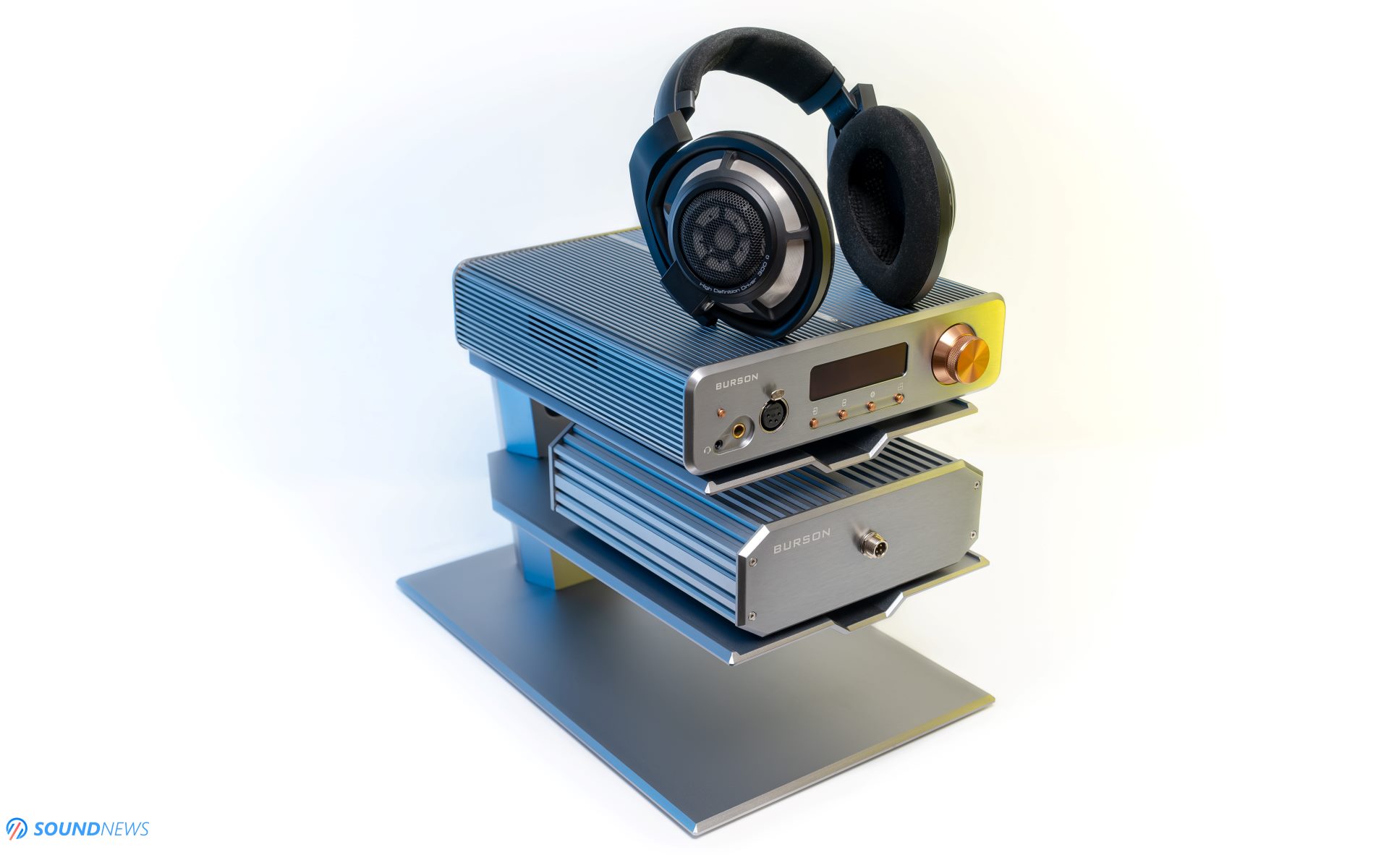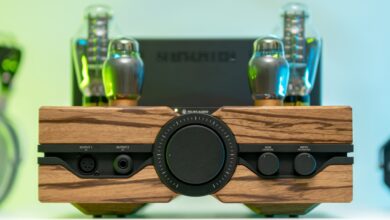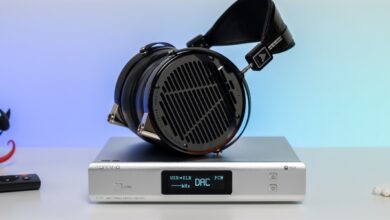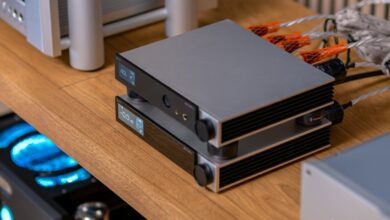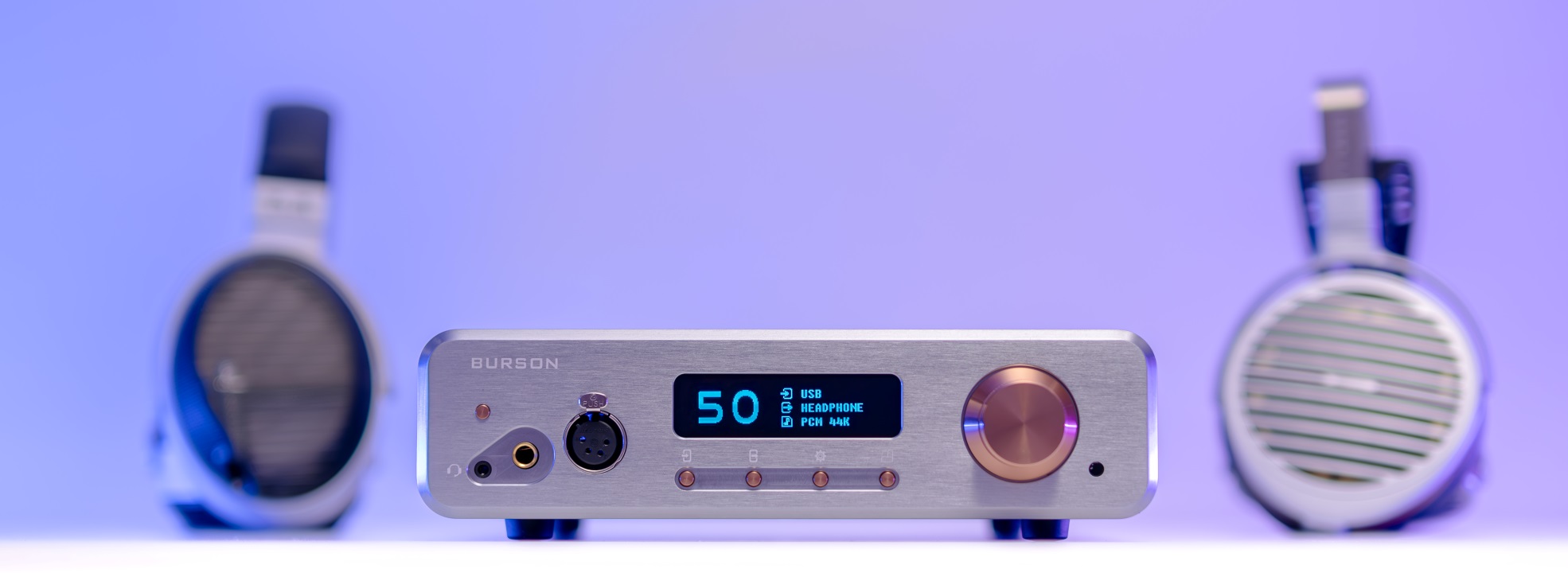
Is it Andúril-wielding Aragorn back on the throne? Is the legendary Ferrari GT4 returning to take its rightful place? Or is a brand-new Porsche Cayman GT4 revving in the distance, ready to conquer the asphalt and send our wallets into the abyss?
Go back to your senses, lads, as today we are going to discuss a different type of GT, the kind that pumps dopamine into veins, revs dynamics high, pushes speakers and headphone drivers, and aligns them in perfect harmony with your tunes. This GT has a long lineage, and it makes me feel like I swapped bodies with Elrond of Rivendell, knowing that I was among the first to experience the firstborn Burson Conductor released a decade and a half ago.
I was there 15 years ago, still writing reviews that looked like books, and I will probably do that until my beard resembles that of Gandalf the Grey. Even if I reviewed and later purchased Burson’s first all-in-one unit, the one that I vividly remember was Burson’s Conductor 3 Reference since it was one of the first articles I published on the brand-new, English-only www.soundnews.net.
A year later, we saw a smaller and more affordable Conductor Performance series, and then the Conductor GT3 landed on my table and completely changed everything I knew about the Conductor series. It’s that time of the year when Burson folks try to outdo themselves and believe me, that’s not as simple as it sounds. When you already have an exemplary-sounding all-in-one unit built from discrete components, I would probably search for the needle in the haystack when comparing the old GT3 with the new one, I thought. But after hearing them side by side, I understood why a new generation of Conductors was crowned that day.
Their cases look similar. We have the same layout front and back with minor tweaks to headphone jack alignment but on the inside? Well, except for similar capacitors and a few components rising on the digital daughter board, everything looks new and fresh again.
For years, I’ve been asking for a better power supply implementation and a cleverer DAC section. I’m not sure if Odin’s ravens heard my prayers during a head-banging & toe-tapping session, but I’m glad to experience firsthand a very different sound from Burson Audio—much more mature and refined than ever before.
Today, however, I won’t review only their brand-new Conductor GT4 ear-drum-pounding all-in-one unit, but also their equally impressive 24V Fusion Core external AC to DC power supply that works not only with the GT4 but with everything else they released so far with a 24V DC input. All of your Conductors, Composers, and Soloists, including the Voyager options, could be powered by the Fusion Core, and even without writing a single word about its performance, in my eyes, it’s worth Every. Single. Penny. This is how much of a difference it made on the GT4 and later on the Soloist Voyager.
The GT4 is now available in three distinct packages, and I’m pleased to know that the standard package is now cheaper compared to the good-old GT3 that sold for $2,999. In case you’re wondering, here is the clear difference between them:
Standard Package ($2,799):
- Conductor GT4 with V6 Vivid Op-amps and Silent Power 01 modules installed
- Standard Power Supply Unit
Deluxe Package ($3,399):
- Conductor GT4 with V7 Vivid Op-amps and Silent Power 02 modules installed
- Burson Super Charger 5A Power Supply
Max Package ($3,999):
- Conductor GT4 with V7 Vivid Op-amps and Silent Power 02 modules installed
- Burson Fusion Core 24V/15A Power Supply
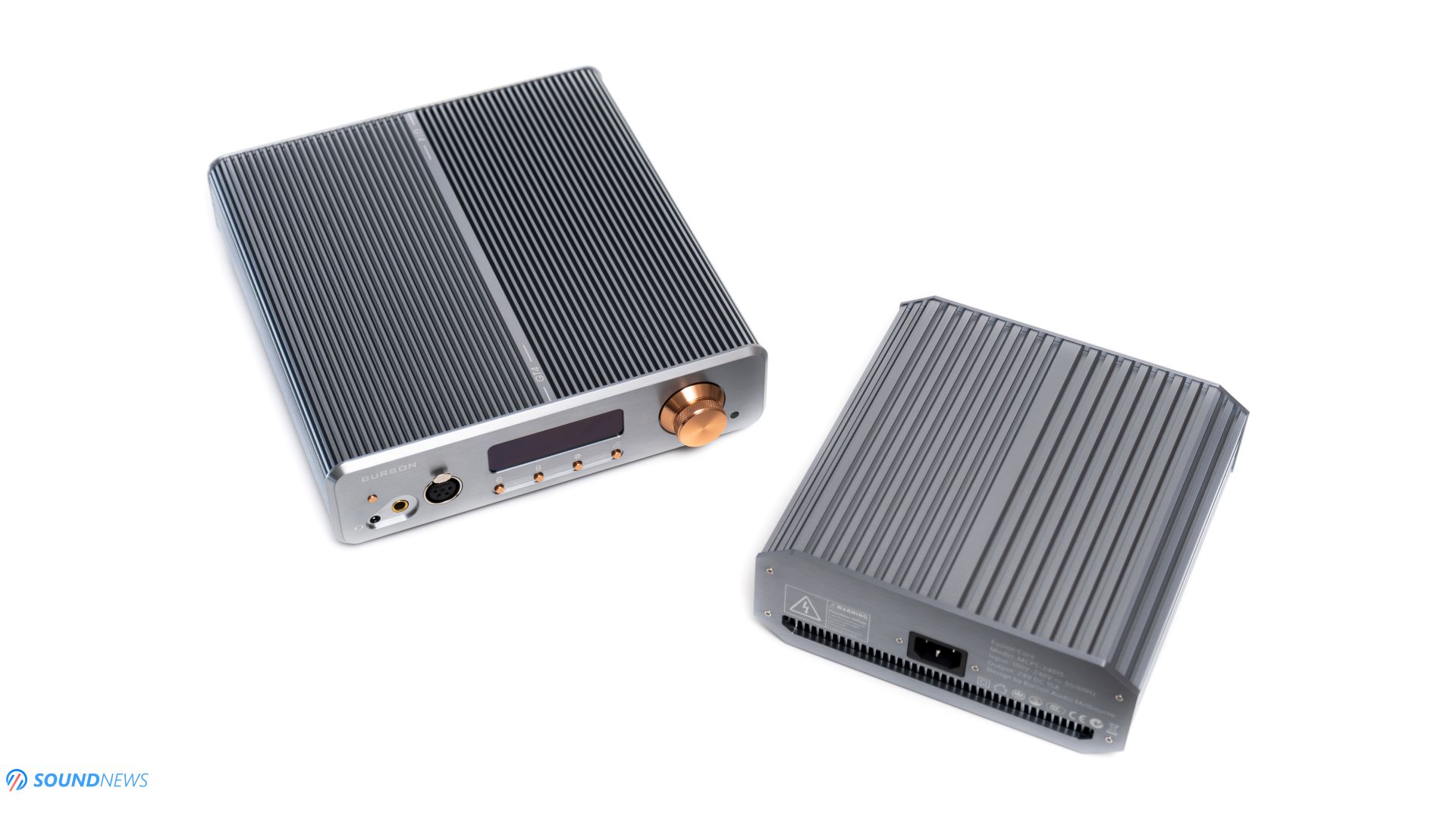
Design & Build Quality
Burson Audio started slowly updating the look of their devices several years ago, and while on the outside the GT4 looks similar to the GT3 (EOL at the time of writing), we no longer have a single 120mm Noctua fan pushing hot air outside its case, but two smaller ones with a much slimmer profile, placed on top of the power transistors. These smaller fans are whisper-quiet and can no longer be heard in a silent environment. I can’t hear them spinning after shutting down my ultra-quiet PC (Corsair One i500). The Soloist Voyager was exactly as silent, and it was only a matter of time before Burson Audio would silence the Conductor series. As a bonus, the unit is now cooler by 2° Celsius than its predecessor.
Its threaded volume wheel has a nice grip, offering decent physical resistance. In the usual fashion, all the screws were hidden on the back panel for a cleaner look, and you can spot taller rubber feet compared to their OG 3rd-gen units. Naturally, its case was CNC machined from aluminum, exposing the raw aluminum look. As time passed, I started liking this camera-friendly look so much that I exchanged all of my electronics with a silver/raw aluminum color scheme.
For cooler electronics, longer service life, and a much smaller footprint in a crowded office, I recommend getting a Cool Stand that you can buy separately for $125 from here. I’m using Cool Stands on all of their devices; I find them reliable and good-looking. You’ll have more desktop space when using it as an all-in-one, and you shouldn’t worry about scratches, as it uses a thick layer of anti-slip, scratch-resistant silicone lining.
Having a medium-sized case (255 x 270 x 70 mm) and weighing about 5 kilos (11 lbs), I don’t find it big or heavy, and it can be easily arranged in smaller workspaces or cramped stereo rigs.
Overall, it follows the minimalist look of Burson Audio devices, screaming high-quality engineering with tight tolerance numbers. Its raw aluminum case working as a massive heatsink will draw some attention, but I certainly dig the understated minimalist look of the unit.
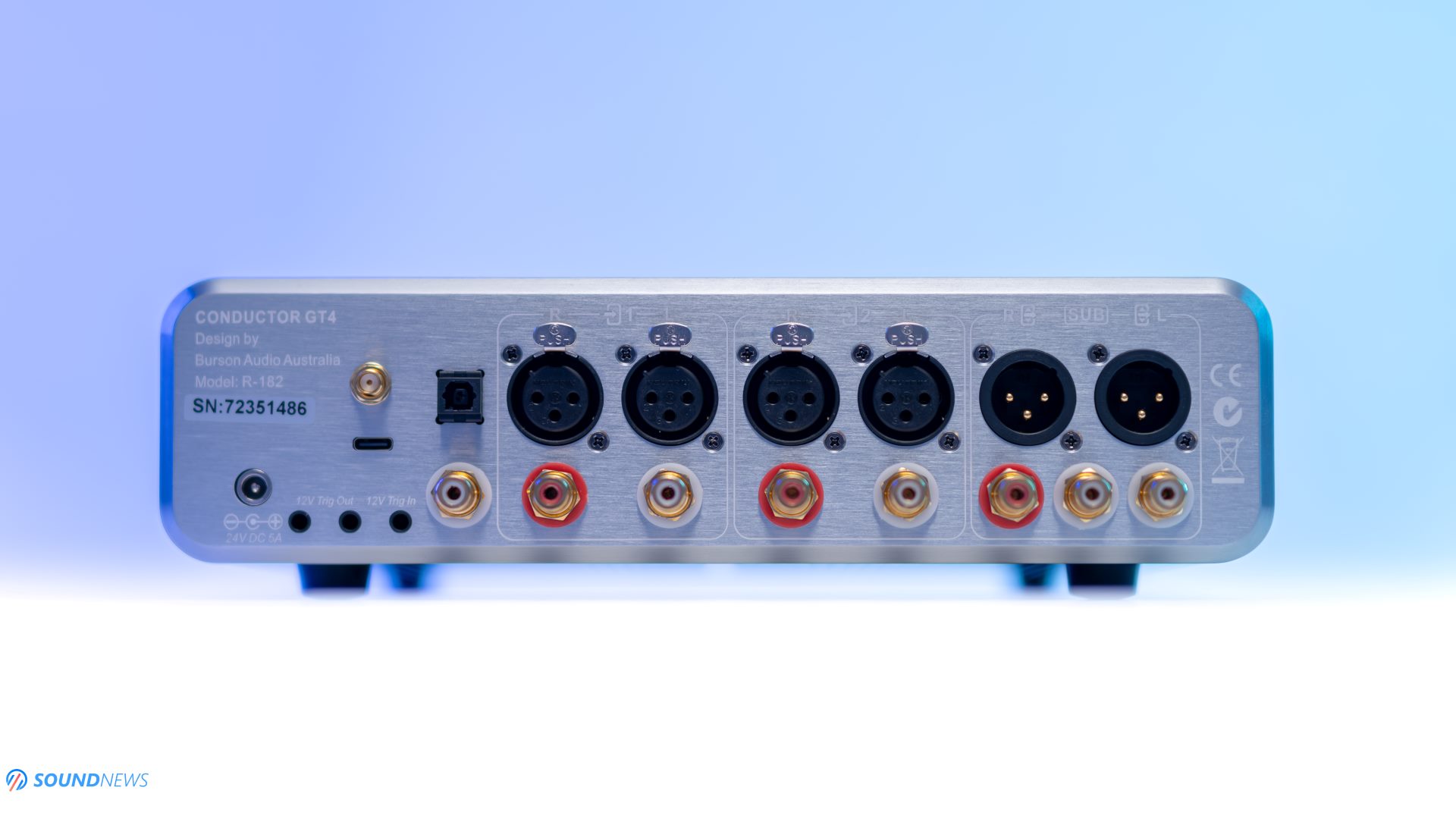
Controls & Connectivity
On its front, you’ll find a 4-pin XLR jack, a regular 6.35 mm (1/4”) jack, and a 3.5 mm (1/8”) microphone input that accepts gaming headsets with 4-pole jacks. From left to right, you have an On/Off button, input & output selector, settings, and a screen flip button. The volume wheel works in the digital domain and offers 99 steps, so no more guessing how much power is left on tap. A monochrome OLED screen is located exactly in the middle. It’s fairly small, but thanks to a bigger font, everything’s visible even in a stereo rig that sits a few meters away. It will show all the important stuff like the volume position, the selected input, output, and sample rate.
On its back panel, you’ll find a crazy number of inputs and outputs, so you can hook it up to almost anything. On the digital side, there’s a USB Type-C, Optical, Coaxial, and Bluetooth antenna socket. On the analog side, there are four pairs of analog inputs, two single-ended and two balanced inputs, allowing you to easily compare two or even four sources at once, and I’m genuinely glad that it offers so many analog inputs. In case you need it, a dedicated preamplifier is also on board, providing a pair of variable RCA and XLR outputs, including a subwoofer output. Besides that, you can spot three triggers and a 24V 5A DC input that will be powering the unit.
Its versatility is unquestionable. It can be used as a DAC-only unit, as a DAC + headamp combo, as a DAC + Preamp, or as a dedicated headphone amplifier or preamplifier, covering all our stereo and personal audio needs.
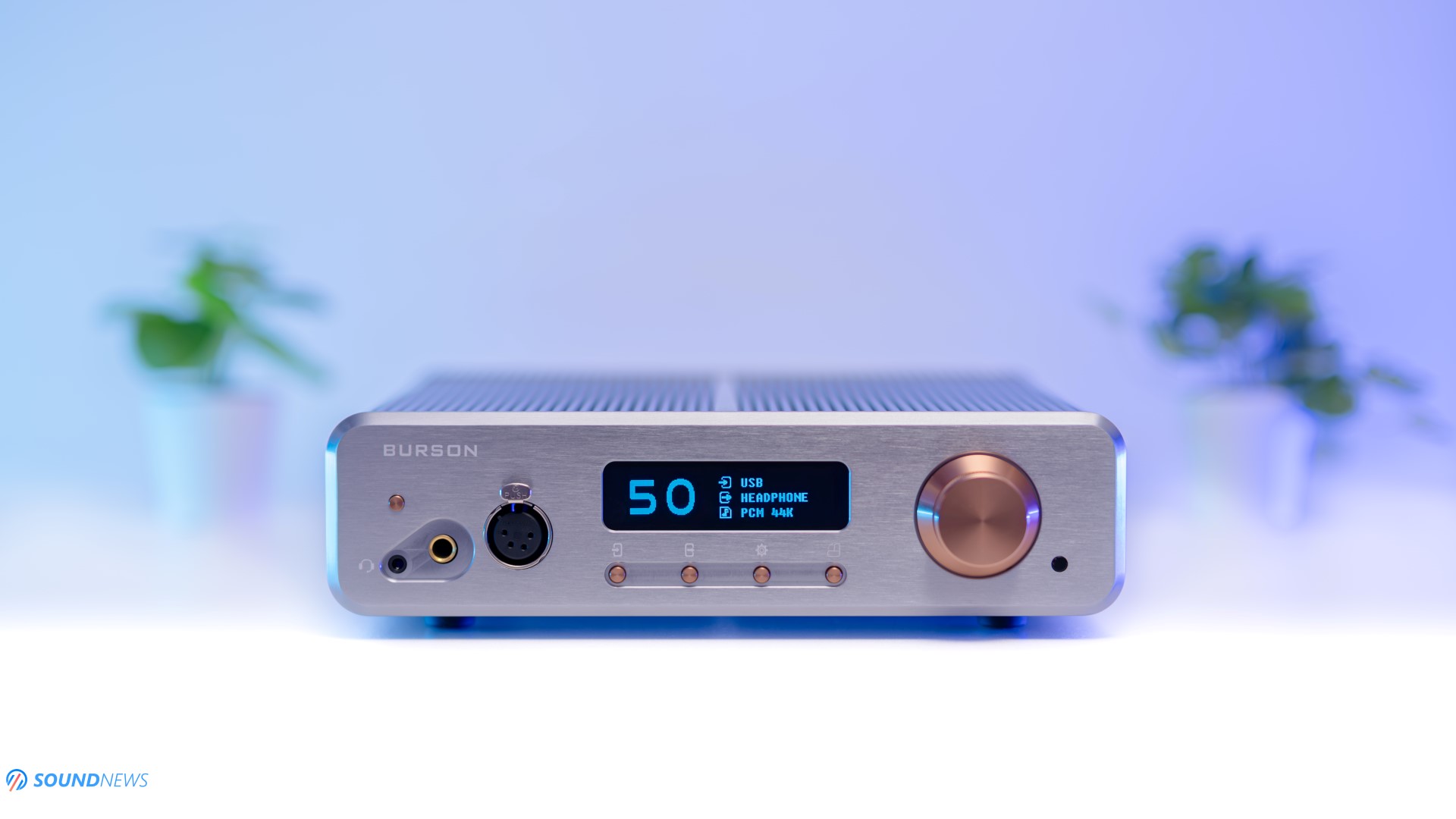
Display Settings
With the included metallic remote control, you can change the volume level, mute & unmute it, and select your desired input. All other features can be controlled on the unit itself, as follows:
- Input: USB, Toslink, Coaxial, Bluetooth, RCA1, RCA2, XLR1, XLR2
- Output: Headphone Out, Headphone + Subwoofer Out, Pre Out, DAC Out
- Gain: Low and High – It will impact the gain of your headphone and preamplifier output
- Fir Filter: Seven digital filters are offered that work on the hardware level, but the sound difference is slight at best or none at worst
- DPLL (DSD): Off, Low, Mid, and High (default) – the higher this setting is, the higher the jitter rejection will be with DSD files
- DPLL (PCM): Off, Low, Mid, or High (default) – a similar setting for PCM files
- Emphasis: Off (default), On position rolls off the treble by around ~5 dB at 10kHz and by ~8 dB at 20 kHz. If you’re using modern digital or analog sources, then please never enable it
- OLED Level: Low or High – sets the brightness level
- Reset Set: Yes or No – resets to factory settings
- Auto Off: Off keeps its display engaged at all times, On shuts it down after a minute of inactivity
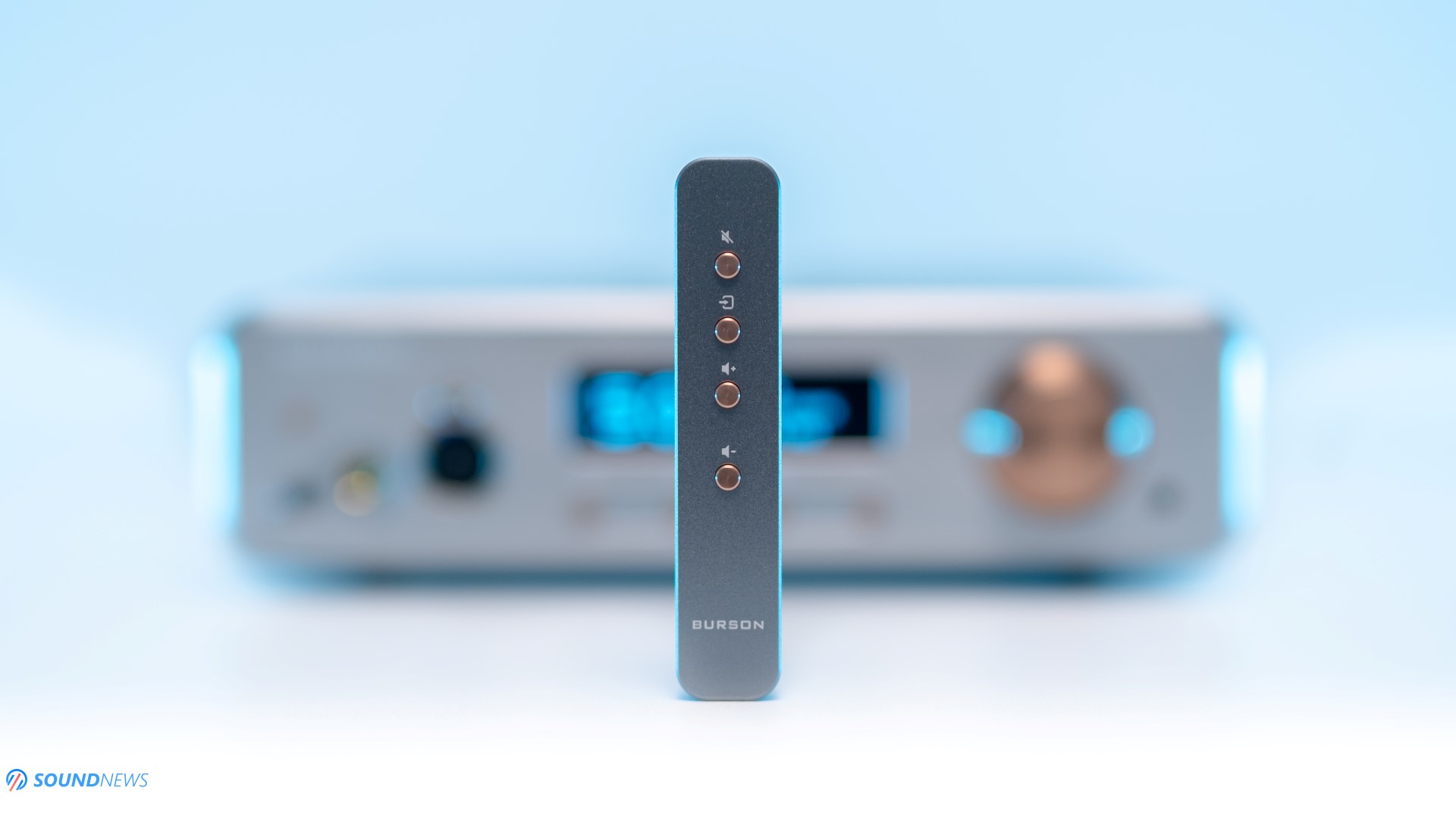
Conductor GT4 VS Conductor GT3
Many of you are scratching your heads right now, asking a very simple yet important question: why do I need the GT4 when I already have a great-sounding Conductor GT3? A simple question leads to a complicated answer, but to make it easy, I compiled a short list that will explain the differences.
- There aren’t upgradable Silent Power Modules installed in the old unit, and the GT3 wasn’t blessed with the best voltage regulators. However, if you want to lower the noise floor and improve the resolution of the GT4, you can do that by installing up to seven Silent Power Modules 02. I have a long chapter comparing Silent Power Modules 01 and 02 in my Soloist Voyager review, and you can expect a similar performance boost with the GT4.
- The Conductor GT3 used four previous generation MAX Current Power Supplies, while the GT4 uses six pieces of stackable MAX Current Power Supplies.
- The GT4 now uses a new discrete output stage, taking advantage of the new power supply design.
- The older unit used the XMOS XU-216 digital receiver that wasn’t always doing a handshake with digital transports and streamers via USB. However, the newest GT4, with a brand-new XU-316 digital receiver, works flawlessly with every Hi-Fi streamer. I’ve tested three streamers, including a Roon server, and all of them recognized the GT4.
- While the same ES9038 Q2M DAC chips are being used, the GT4 uses a single chip per channel, as opposed to paralleling two chips on the GT3; thus, each DAC chip is powered by a dedicated power supply. The result? Lower channel crosstalk (better stereo separation) and a higher dynamic range (higher resolution) on the GT4. I like it already.
- GT4 is now rocking a new volume curve (more linear on GT4 as opposed to logarithmic on the GT3) so that more customers can use its high-gain setting.
- Last but not least, the GT3 uses a 120mm Noctua fan to pull hot air outside, and in a quiet environment, you could hear it spinning. The GT4 now uses smaller and much more efficient coolers. Yes! Plural. We have two of them, located atop the power transistors on the left and right sides of the case. And the best part? You won’t hear them anymore. I presume these are spinning at around 500 to maybe 800 RPM, so good luck hearing them in a quiet environment.
In the end, the GT4 offers the same features, inputs, and outputs but has a much different internal layout, improving the digital and analog sections of the circuit while completely redesigning the power supply section.
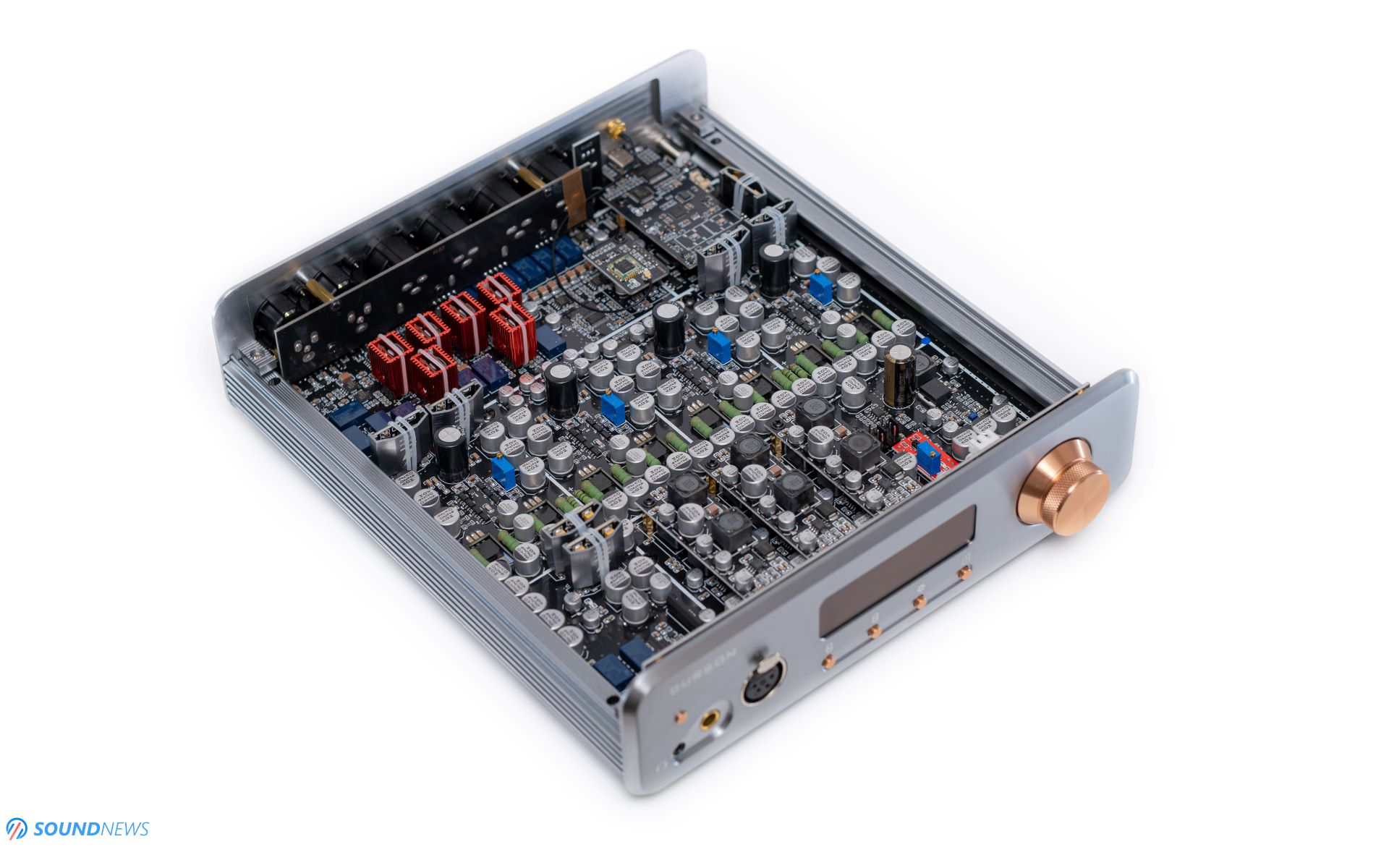
Under the hood of Conductor GT4 & Fusion Core
We are looking at a fully balanced, fully discrete, dual-mono DAC, headphone amplifier, and preamplifier. Its digital section is based on two flagship ES9038 Q2M DAC chips. Burson has used this silicon for a few years now, gathering a lot of experience along the way, as all their current production DACs are using it. However, this time around, instead of paralleling two chips, we have one chip per channel working in stereo mode for lower channel crosstalk and higher dynamic range.
Instead of going with off-the-shelf op-amps in its output stage, Burson implemented a new output stage based on all-discrete V6 Vivid or V7 Vivid op-amps, combined with a new feedback-based gain control. The resulting unit is undoubtedly their best DAC to date. Knowing these op-amps quite well and using them extensively in the Soloist Voyager, I would go with V7 variants that sound more effortless and dynamic at the same time, without emphasizing the upper region like the V6 Vivids used to do.
While the XMOS XU-216 digital receiver is reliable when used with phones, tablets, PCs, and Macs, it’s not always recognized by the newest Hi-Fi streamers, and that’s why Burson is now using a newer generation, the XU-316, which doubled the processing power. Thanks to it, the GT4 now works with most, if not all, Hi-Fi streamers and digital transports, able to decode natively DSD512 and 32-bit 768 kHz PCM material via the USB input. The flagship Qualcomm CSR8675 Bluetooth receiver is still onboard, supporting some of the fanciest codecs such as SBC, AAC, AptX, AptX-HD, and LDAC at up to 24-bit/96 kHz, plus the included Bluetooth antenna gives a helping hand when a concrete wall sits between the sender (your smart device) and the GT4.
It’s no secret to anyone that we’re dealing again with a fully discrete, fully balanced input-to-output stage that works in a deep Class-A operation. Op-amps were banned for good; otherwise, Burson can’t sound as good as a solid state should. Its amplifier stages were driven to their maximum, leading to a warmer case that needed active cooling for proper heat dissipation.
From input to output, the signal path remains balanced, and if you want the best performance with the lowest channel crosstalk, then use its XLR inputs and outputs for the best results. I’ve spotted eight output transistors, two per module, and it has four of them for a fully balanced signal. It outputs some very serious power, more exactly 10 Watts per channel in 16 Ohms on its balanced output, and half of that on its single-ended output, making it the most powerful Burson DAC/Amp combo to date. They used four discrete V6/V7 Vivid op-amps at the input stage, and two are buffering its volume control chips.
Burson improved the precision of its volume control and increased channel separation, and it seems that a passive preamplifier is no longer needed for perfect channel balance and volume control. My biggest desire with the GT4 was a lower channel crosstalk, and it seems that my wish came true.
Don’t get upset seeing an external switching mode power supply because its actual power supply is sitting inside the unit. Conductor GT4 uses a total of six MAX Current Power Supplies (MCPS for short) that Burson developed and included for the first time in their Conductor 3R. However, if you want a darker background and a lower noise floor that increases resolution, then you should consider getting a Super Charger 5A or, better yet, a Fusion Core.
A fancy name for a special power supply, but if you have basic electronics knowledge, then you’ll soon realize that the Fusion Core is worth every penny. In traditional Class-A/B power supply designs, MOSFET transistors are employed to switch the power On and Off—an essential task for regulating the output voltage and current effectively. The Fusion Core takes a very different approach by using GaN (Gallium Nitride) transistors which are switching On and Off at a 1 MHz frequency – waaay above our hearing abilities or even those of Batman himself. This ultra-high frequency switching, combined with a much beefier DC filtering and regulation stage, leads to a more effective noise reduction and therefore delivers cleaner power to all of the components of your Conductors, Composers, and Soloists.
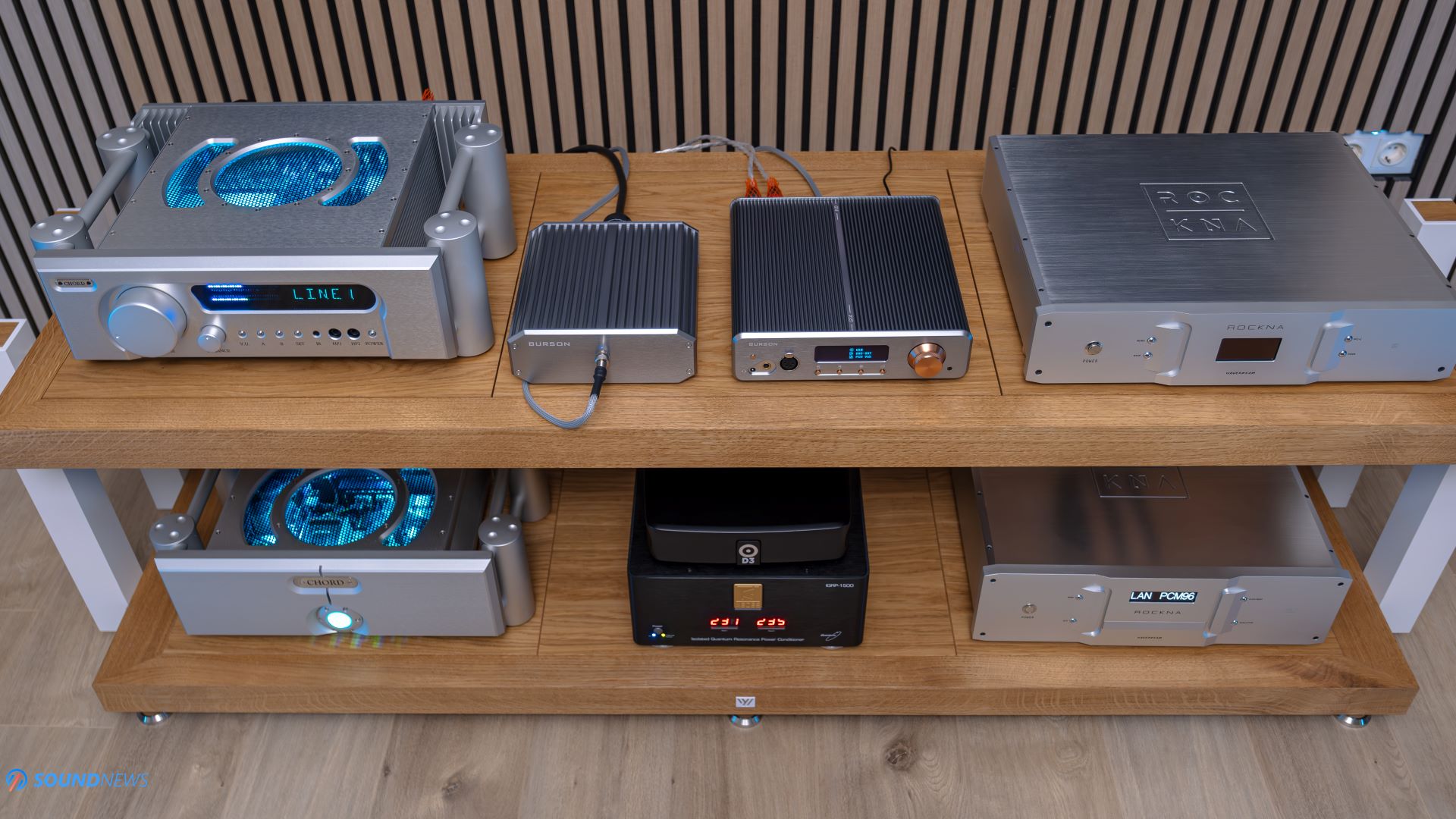
Test Equipment
I’m not just a head-fi headbanger, but also an avid stereo head, and that’s why the GT4 was used in two distinct and equally impressive setups:
- In my office, it worked as a DAC and headphone amplifier combo, fed by a Rockna Wavedream NET Roon server via USB. And don’t worry, I won’t be gentle with this guy, so instead of using only hard-to-drive cans like low-sensitivity planar and high-impedance dynamic headphones, I also tried several sensitive IEMs to have a much broader picture of its performance.
- Later on, I moved it to the living room, where it was again connected to the Rockna Wavedream NET Roon server/streamer, followed by a Chord Electronics Ultima 2 PRE and Ultima 5 power amplifier, driving a notoriously hard-to-control but beautifully sounding pair of Raidho TD 2.2 speakers handcrafted in Denmark.
Alright everyone, my body and soul are ready for some well-deserved music, so let’s hit some eardrums!

Sound Performance
I. Preliminary Sound Impressions
I received the package about a month ago, tore it down like Christmas came early, connected the Fusion Core to the wall and the umbilical cable to the GT4, attaching a 4-pin XLR cable to the T+A Solitaire P and later to the HiFiMan Susvara.
I woke up at 7:30 a.m., and by 8 a.m., I had a coffee in hand, ready to hit some eardrums and experience the novelty of a fresh new day. And just like that *snaps fingers*, I sat there for almost a day, sending left and right sound impressions to our crew, as it sounded fantastic without any kind of burn-in or brain accommodation.
Undeniably, it’s the same Burson house sound that I’ve been enjoying for quite some time, but who am I fooling? Things got better…things improved to the point of being almost unrecognizable. I’ve been writing and shouting my lungs out for a while about the importance of clean power feeding your electronics. I sounded like a broken record, repeating these things again and again. I’ve been using passive power conditioners for more than six years now, and there’s no going back for me. Once you experience a lower noise floor and complete silence in between the passages, even when music blasts at 100 dB, there’s no way you could go back. It’s like the space between the lowest and the highest intensity sound got much bigger; the sounds are clearer and more saturated than ever before, like hearing them in full glory without any filters applied.
This is what I’ve heard on the Conductor GT4 right from the get-go. The electronics within surely made a substantial difference and more on that in the following chapters. But, the Fusion Core did wonders in cleaning up the mess and delivering a true Hi-Fi experience that could impress even snobby audiophiles. When noise is no longer part of the circuit, lots of miracles start to emerge if you know where to focus your attention, and no, it isn’t only resolution going up and noise going down, but even the engagement factor and timing improve. The haziness goes away, along with the blurry images and sharp trebles. Gone, never to be heard again—replaced with a pure, natural sound rendition that only proper, fully discrete, pure Class-A amplifiers with zero negative feedback could achieve.
I was so impressed by what I heard that I immediately shot an email to Alex from Burson’s team and expressed my findings. I even mentioned that without any comparisons whatsoever, I liked the sound of the Conductor GT4 more than that of the Soloist Voyager driven by the Super Charger 5A. Obviously, the Fusion Core could power the Voyager as well and further improve its performance, but more about that in the next chapter.
For the first time in a Burson Audio review, I don’t think about the frequency response anymore, the bass, midrange, and treble, or the tonal balance, and how everything should work together as a team. All of that is already perfectly balanced and to anyone’s surprise, there’s absolutely zero harshness or listening fatigue.
I went ahead and put on some of the harshest oriental electronica albums that I enjoy on weekends, such as Dies Irae (feat. Vila) by Nattura (Tidal), which exhibits a strong bass line accompanied by even stronger percussion work. On most solid-state amplifiers and chip-based DACs, the track becomes unlistenable due to its higher treble presence around mid-track. It was mixed that way and nothing could cure it, except for vacuum tubes and R2R ladder DACs. Even in that state, I don’t know why, but it spoke to my inner self and I connected with it. This exact track on the T+A Solitaire P is known to have a ruthless treble delivery, but you know what? There’s no harshness in sight. I was blasting my eardrums at 90 to 95 dB, and yet, it felt great and the treble never went out of control.
And I didn’t stop there! Marilyn Manson is notorious for having crystal clear releases with a Hi-Fi allure. Two tracks from his The Pale Emperor album (Qobuz / Tidal) are part of our daily playlist, thanks to their higher-than-usual dynamics, strong kick in the chest, and overall cleanness when things get busy. These tracks shot hundreds of needles, piercing my eardrums with an SMSL SH-X headphone amplifier, but on the Conductor GT4? It’s like someone magically removed the treble ringing that was making everything unnatural, letting it play unrestrained without over-sharpening the picture. Some of the oldest Burson designs can get a little aggressive, but the GT4 with the Fusion Core is devoid of any of that, impressing not only the audiophile within but also the melomaniac who devours music with an unlimited appetite.
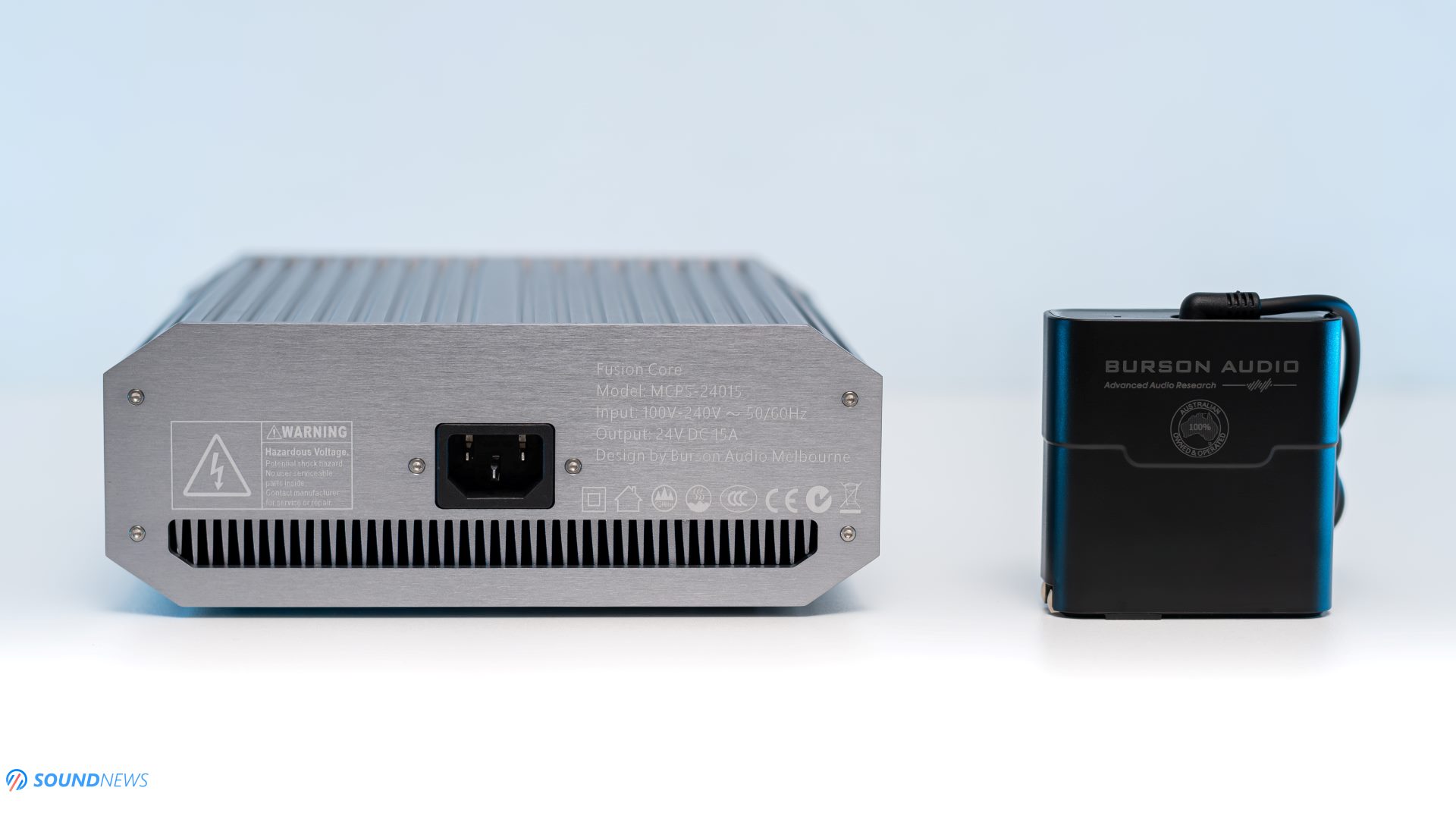
II. The FUSION CORE Experience (VS Standard and Super Charger 5A Power Supplies)
As a tinkerer of all sorts, multitool and screwdriver collector (yes, really!), from a young age I started repairing my own cassette players, tuners, and later CD players. Over time, I started understanding their inner workings, and in truth, a single glance at a PCB from an experienced eye can tell you at least 70 to 80% of the sound you should expect. At the end of the day, we are listening to the components carefully placed in the signal path, and only sometimes to software-defined units, like FPGA DACs.
I tried to disassemble the Fusion Core, but the DC connector was so tightly screwed that I would surely damage it if I put a lot of pressure. Instead, I unscrewed the other side. There is no way I can open up the case for a full inspection and photoshoot, but through the cracks, I saw three EI-core transformers with thermal paste in between them and the aluminum case, there were at least two copper coils, and several GaN FET transistors. This is a cleverly crafted power supply, and as much as I enjoyed listening to their units over the years with the Super Charger 5A, there is simply a world of difference between these two.
The driving force of a Hi-Fi system isn’t the gear you’re using, but the power fed to all of your devices. Living in a 10-floor building with a less-than-perfect power grid, there were days when I couldn’t listen to the system I love, as from beautiful and nuanced, the sound could go dirty and unrefined. With detail-monster speakers like the Raidho TD2.2 or resolution king headphones such as the T+A Solitaire P and HiFiMan Susvara, the difference was so big that I simply refused to listen to music on such days, only in the evenings or ideally, late at night when nobody would use the power grid.
In time, I’ve experienced active and passive power conditioners, but I must confess that neither of the active conditioners impressed me, due to limiting dynamics with power and integrated amplifiers. The Plixir Elite BAC and later the KECES IQRP series of passive power conditioners completely solved my problems. The music finally sounded as good in daylight as it did late at night. Not only that, but the sound itself got purer and much more refined than ever before, and regardless of what others believe, nothing beats real experience in your own home.
The Fusion Core is extremely important, as only with it can Burson’s Conductors or Soloists fully reveal their sleeping beauty. Yes, I’m often quite poetic when things impress me deeply, but that’s only because they move me so much, literally and figuratively. I start moving my body when music speaks to me and my imagination starts playing with words too.
I listened to the GT4 with the Fusion Core at first and then decided to do a comparison with the Standard and Super Charger 5A. Well, let’s just say that the magic went out the window with the standard power supply. The frequency response and the overall tonality remained intact, BUT everything else was radically changed. The beautiful overtones of musical instruments, the soothing voices, and the long bass decays that had so many layers to them were no longer there. The sound got raw, unrefined, and the resolution went down by at least three notches. Probably with less resolving headphones and speakers, the difference won’t be as big, but I assure you, the sound will no longer impress a music lover, getting almost aggressive sounding at the end of the day.
Swapping it with the Super Charger 5A added some dark matter in between the notes, the sound was more cohesive this time around, some naturalness returned, and from an aggressive-sounding unit, the GT4 sounded way more liquid than before. I could finally experience more nuances playing in the background and the soprano voices were no longer shouting at me but beautifully singing. The sound improved, but what came next was a much bigger improvement!
I remember trying the Ferrum HYPSOS power supply with the Conductor GT3 and later with the Soloist GT3 and I couldn’t hear much of a difference between it and the Super Charger 5A; there were a few minor things here and there, but overall, they performed similarly. However, when I swapped the Super Charger 5A with the Fusion Core, let’s just say that the jump from the standard PS to the Super Charger was nothing compared to the change I’m experiencing right now. The first feeling is that I opened the windows wide open to the music. There’s simply nothing else lying in the path. The blackness between the notes is overwhelming and so is the detail retrieval which went up by several notches. Probably the biggest change was the timing and naturalness. The transients aligned perfectly with the music, and I never felt the initial aggressive character, replaced with a smooth tone and timbre, almost like adding some milk and honey on top of an already sweet presentation.
And the changes are not limited to the Conductor GT4! If you own any of their units that have 24V DC inputs (everything they do except for the Timekeeper series), then the Fusion Core is ready to power them and radically change your sound impressions.
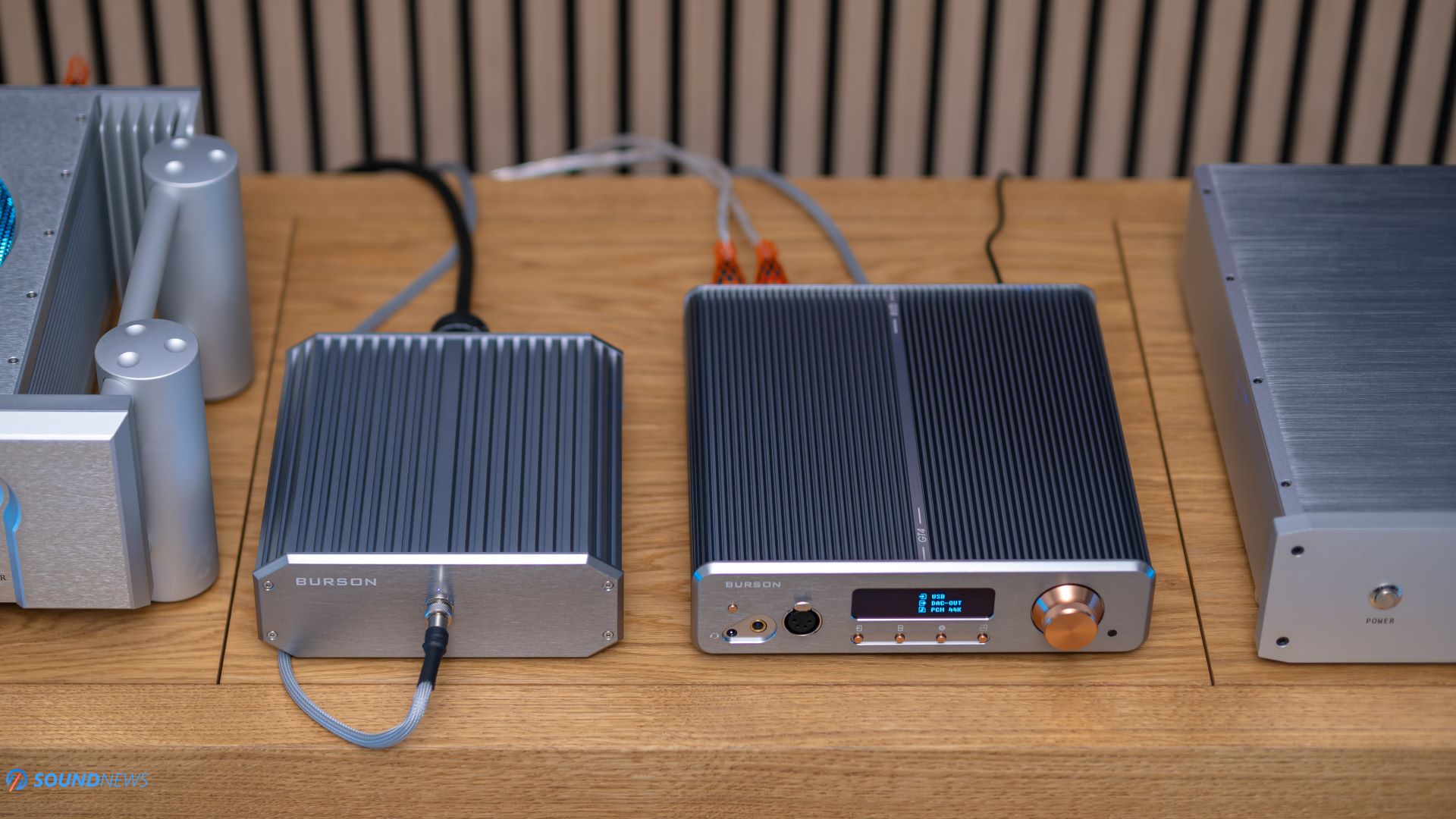
III. Dynamics & Transient Response
It’s no secret to anyone that Burson Audio puts a lot of effort into unlocking crazy transients that can rattle your skull with the right music and gear. Every single component they have released so far, including their entry-level Funk and Playmate, do justice to dynamics, always trying to deliver a strong kick in the lowest octaves and then control all of that energy with an iron grip and cool it off in a relaxed way.
The bigger their units get, the stronger the kick in the eardrums, and a nicer control of the drivers will follow. Please don’t forget that we’re talking about a fully discrete Class-A amplification stage. The bigger their units get, the deeper Class-A bias will be unlocked, and if you opt for their newest V7 Vivid op-amps, then you’ll get even crazier dopamine rushes, as these are transistor-powered and therefore, additional current will be passing through them, leading to even better timings and driver control. For years, I’ve been trying to express my feelings about such units and even if I’m trying new gear every week, I still feel that nothing tops Burson Audio in terms of dynamics.
I have never met these guys, and their team is known to me only via email, but after listening to their gear for so long, I can almost guess that these Aussies are into modern music, they surely like to be pounded by relentless bass notes, over and over again.
In this regard, the Conductor GT4 is no different, and these guys would be shooting themselves in the foot if dynamics weren’t as impressive…and yet, there’s a difference the Fusion Core so gracefully exposes to me. The noise floor is so much lower and the blackness surrounding every note makes the transient response feel stronger. The GT4 is quite fun sounding on its own, but the fun factor reaches higher grounds, as things no longer distract you. The older units could get a bit aggressive sounding in the treble, like the OG Soloist 3X GT and this is where the Fusion Core comes in and saves the day, even for older Burson Audio designs.
Dynamics still pound and kick hard, but all of that comes forward without paying a heavy price. There aren’t drawbacks anymore; the aggressive nature is no longer there, and the sharpness no longer stings, replaced by a richer sound than ever before.
Several publications and YouTube channels started asking themselves: why is modern music so bad? Several factors come into play: the freedom of speech, the liberty we live in, the (much) better times with better health care and nutrition, and overall being a lot wackier and less serious. However, let’s not forget that there are still a few creators who are pushing the envelope higher than it ever was! Marcin Patrzałek (who goes by Marcin on streaming platforms like Qobuz and Tidal) and Polyphia are some of those musical wizards who proved everybody wrong. These folks do things differently and they do it with lots of passion. I like these two for different reasons: the way they play, the way they move their hands on the fretboard, the way they slam their guitars, and their body language…it’s a play that awakens all of your senses; but above all, they know how to slap your eardrums with a higher force than usual. Bob Marley once said: “One good thing about music is when it hits you, you feel no pain.” And that’s exactly how Polyphia and Marcin sound on the GT4 powered by the Fusion Core. Alive, punchy, and addictive, yet completely harmless.

IV. Resolution & Transparency
As a music-first audiophile, I search for the elusive Nirvana when listening to music, trying to immerse myself and detach from the physical world. But this part is not easily achieved; I need an old drink in my vicinity, good company, and of course, a diverse playlist meticulously selected to invoke the full relaxation of the body and spirit. Now, I need to confess that besides having just the right tone and timbre, the music needs to be cleaned up, devoid of ugly things that might tire you out. The resolution game is certainly part of this equation, as without a higher dose than usual, I’m not sure I could ever unlock the sleeping beauty behind my speakers and headphones.
Burson cared about the resolution game, and they certainly delivered a minor improvement with each product release. The Conductor GT3 (3X GT, as it was called at the time of review) changed my preconceptions about Burson Audio as a DAC maker. In audio design, I tend to use separate units, as their makers spend all of their time perfecting their D/A converter or their analog-only amplifiers; very few know how to deliver a perfectly balanced all-in-one combo without limiting the digital or analog side of the circuit.
However, I still like to express my feelings privately via email with several audio manufacturers that I think need some guidance, and Burson Audio was definitely one of them. I dreamed about an all-in-one Burson unit that would put a higher emphasis on the DAC’s performance, on the dynamic range, and ultimately on the resolution, things that I believe were holding back older Burson designs. Playing with D/A converters for such a long time and later purchasing some of the best-sounding ones, I can differentiate good from great, and giving a helping hand is something that I do weekly. Considering that the standard Conductor GT4 is now more affordable than the standard Conductor GT3 released a couple of years ago, and taking into account world economics and inflation, which make the GT4 considerably cheaper, it was a pleasant surprise to experience a better DAC implementation and a purer output stage that focused on delivering a clearer presentation.
It’s clear to me that the GT4 is presenting a higher degree of information to the listener; there is simply more music rising to the surface and less noise. The small nuances no longer feel forced, and you no longer need to focus and close your eyes to hear their beauty. Having collected cassettes and later CDs as a teenager, I tend to know my music very well, and when something doesn’t play with the same resolution and transparency I’m accustomed to, I usually start writing some less pleasant emails. But this time around, I didn’t need to send an email; the GT4 is finally on par with dedicated DACs costing four figures. Sure, it’s still not Gustard X30 or Ferrum WANDLA material, but it’s not that far off. The gap is now smaller than ever before, and if you power it with the Fusion Core, then all of that info will rise to the surface with an extra degree of focus and outline. It’s like using the de-noise tool in Adobe Premiere Pro / Lightroom or upgrading an old 1080P monitor to a 4K HDR one. There is more of everything, with extra contrast and eye bling. If you like to hear the things happening behind your tracks, then you’ll need the Fusion Core—the one component that freed the sound, tightened it up, and revealed the beauty within.
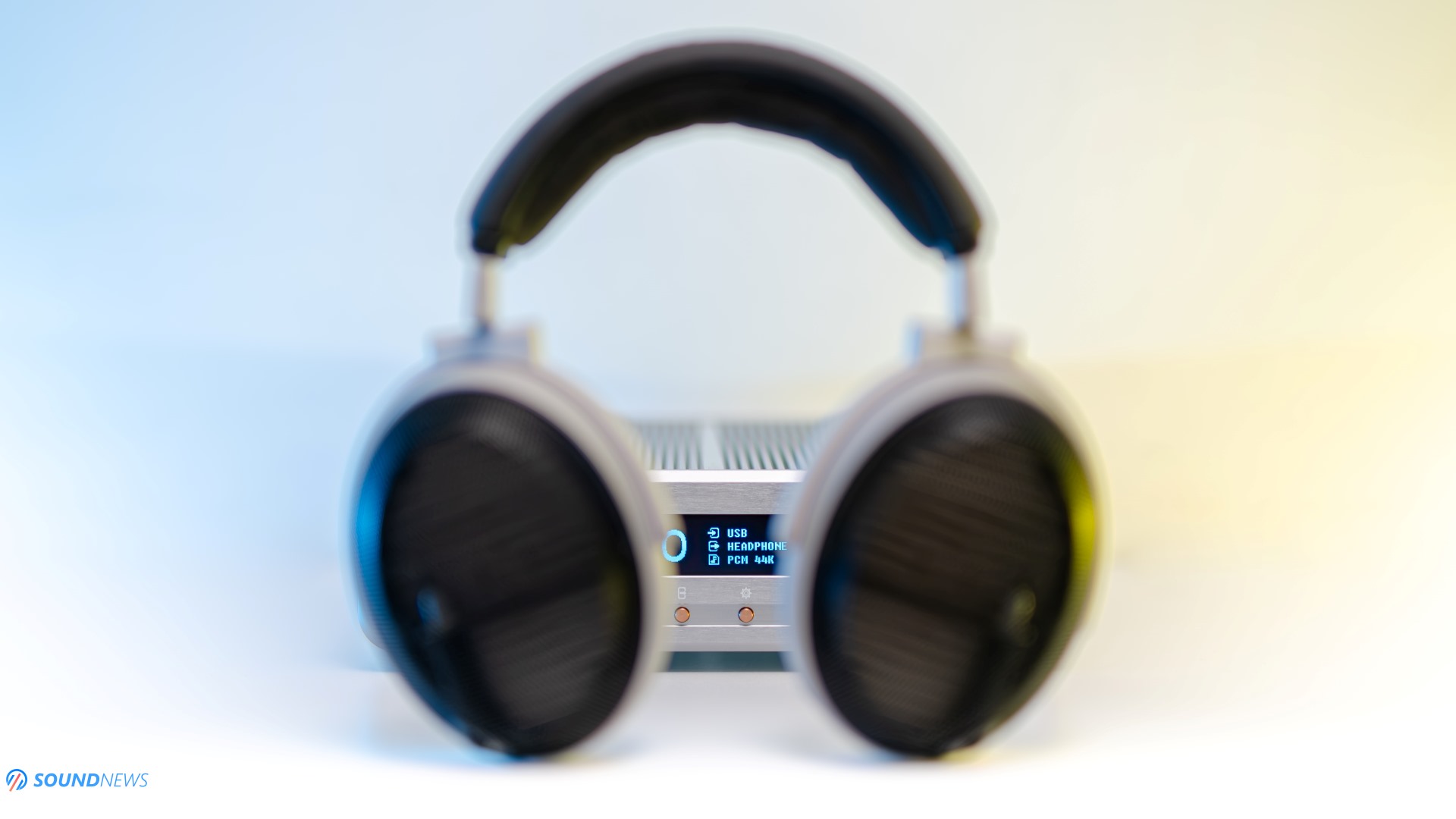
V. Soundstage & Imaging
Channel crosstalk is the worst enemy of the so-called soundstage and note separation. This ugly entity crawls inside the PCBs of amplifiers and DACs, merging the left and right channels starting from a certain volume. Some do it at 90 dB, others at 100 dB or more, while others banish this creature for good, having zero channel crosstalk regardless of the volume—and those are mono-block amplifiers that completely separate the signal paths since there are two units, each with its own interconnect and power cable attached.
Channel crosstalk distortion can be less critical in a stereo rig, as no matter what you do, you can still hear with the left ear what’s playing from the right loudspeaker and vice versa. However, you don’t want something like this happening with your headphones, which usually shrink the width and collapse a few notes on top of each other for a congested and up-front sound. The higher you go volume-wise, the more this distortion will badly affect the note separation. In my humble opinion, this is the worst enemy of headphone listening, and over the years, I started to have a higher appreciation for DAC/Amp makers that try to lower this type of distortion.
To achieve this, we need a fully balanced signal, separated signal paths for the right and left channels, and ideally, at least two DAC chips that work independently with one channel each, as opposed to paralleling two DAC chips working with both channels. Burson already had a fully balanced circuit with their older units, but separating the DAC chips, each working with one channel, all powered by independent power supplies—this is a novelty for Burson Audio, and I’m glad they addressed the elephant in the room.
In most of my former headphone amplifier comparisons, you could see Burson’s Soloist usually winning top rankings when it came to dynamics, resolution, and transparency, but they lost ground in terms of note separation and soundstage when compared directly to Flux Lab Acoustics and Enleum creations, which sounded more spacious at the end of the day.
The Conductor GT4 won’t be compared to a DAC/Amp combo today, only because I do not have at my disposal a unit that could keep up in terms of technicalities, but the GT4 no longer has a mid-sized stage, nor does it push the performance on stage with open-back headphones. Finally, it’s up there with the big boys, and in this regard, it sounds as spacious and airy as their Soloist Voyager.
When I moved it into the living room, replacing a much more expensive Rockna Wavedream Signature DAC (~$19,000), the sound no longer emanated from behind the wall, and I didn’t feel hugged by the music effortlessly and naturally (things that R2R ladder DACs excel at), but there were still precise spatial cues floating around that never felt forced, nor sharp. The notes were crystal clear and defined, the sounds were still emanating from the middle of the audio rack (a thing that usually happens on low-crosstalk systems), and overall, I liked the new approach that Burson adopted with the GT4, expanding the soundscape, stretching the sound a little wider, and delivering a bigger picture at the end of the day.
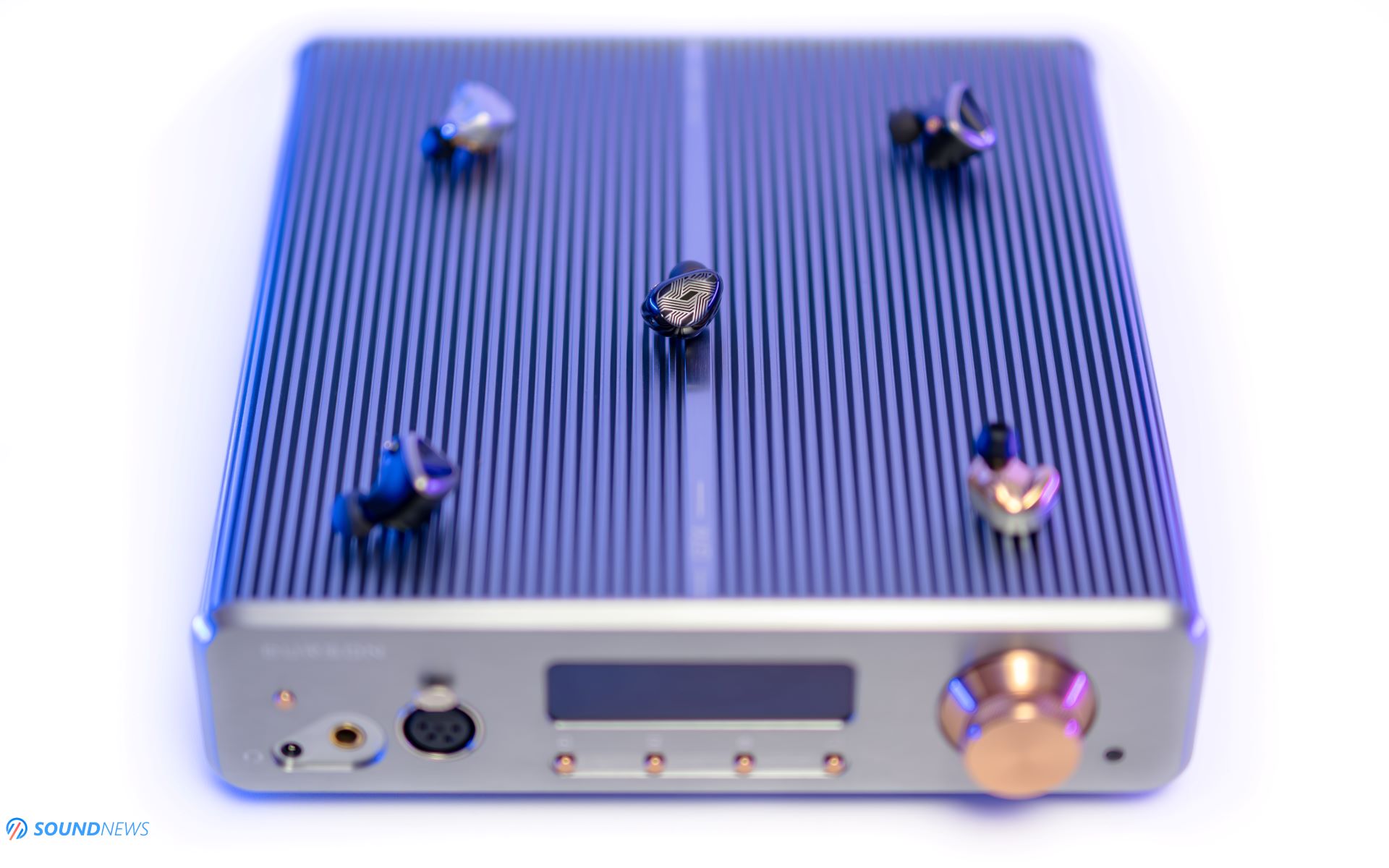
VI. Noise Floor (IEM Compatibility) & Power Output
If you already checked my Soloist 3X GT 2023 review, then the same story repeats itself with the Conductor GT4. Long story short, after connecting two of my uber-sensitive IEMs, such as FiiO FH19 and FA19 (my personal noise sniffers), and after engaging the low-gain position, I could hear a barely audible hiss passing through. It’s important to mention that once the music started playing, I couldn’t spot traces of noise even in silent passages. It didn’t matter if I was increasing or decreasing the volume; the hiss was always constant.
Engaging its high-gain setting and pushing more power towards the IEMs further increased the noise floor, suggesting that high-gain should be used only with low-sensitivity planars or high-impedance dynamic headphones.
When I moved to less sensitive IEMs, the noise floor went to subatomic levels and I couldn’t spot it anymore, even at higher volumes without music playing in the background. As you can imagine, portable over-ear headphones and sensitive desktop dynamic headphones couldn’t pick that up, and again, a complete silence covered my tracks. The lesson is quite simple: I don’t recommend using ultra-sensitive IEMs with this unit, but if desktop space is an issue and a universal unit for your entire IEM and headphone collection is desirable, then may I suggest getting an iFi Audio iEMatch+ that will remove all of the noise.
Power-wise, there’s no need to go through every headphone in my collection, but I will mention that from 99 steps available on tap, I never went past the ~65 position with a pair of HiFiMan Susvara, and mind you, these are currently the lowest-sensitivity headphones along with the Mod House Audio Tungsten.
Burson once again fine-tuned the volume curve, which feels less logarithmic and more linear. The GT4 made the Susvara jump around my head, but only for a few seconds, as I tried to push them to their upper power limits. MiniDSP E.A.R.S. was showing an SPL of 105 dB and since I treasure my hearing more than anything, I decided to stop there. With T+A Solitaire, the highest volume I could reach was a 55-volume position, again leaving a ton of headroom on tap for high dynamic range tracks or DSD recordings.
Long story short, the GT4 will easily drive the most demanding loads out there and will always leave a ton of headroom on tap. Dynamics were always snappy and, dare I say, impactful, and it was able to control all of that power with an iron grip, akin to their standalone Soloist GT units. As you can imagine, everything else from my headphone wall was driven with aplomb. Regardless of the headphones and technology used, the GT4 beautifully controlled each one of them. All my headphones were alive and punchy, and I didn’t need to crank the volume way up for that to happen. Even at low listening volumes, you could feel the bass bouncing all around and kicking your eardrums with a strong force.
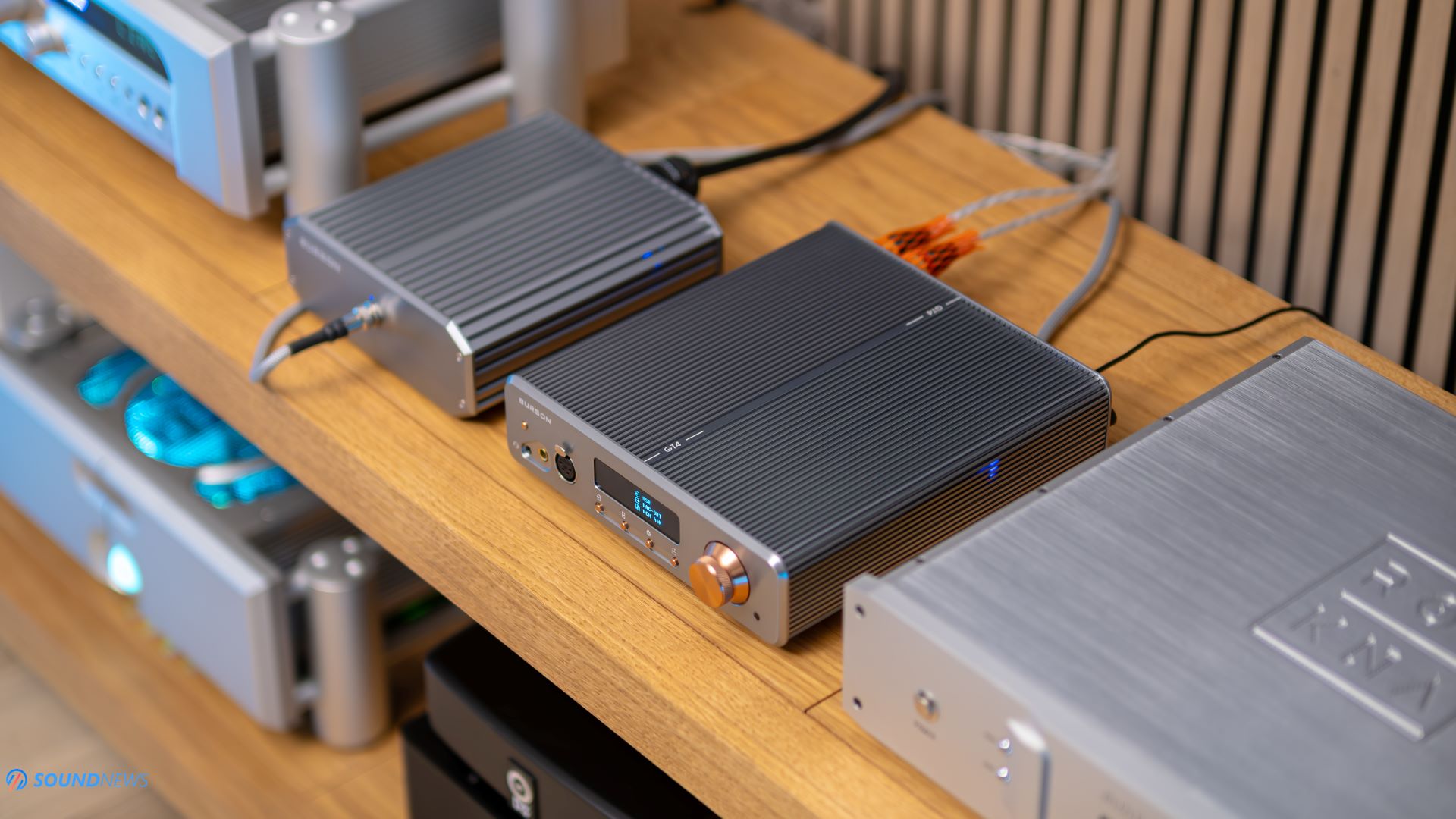
Frequency Response
It’s almost redundant writing about the frequency response, especially when it’s powered by the Fusion Core. The sounds got freer, the flow of the music improved, the overtones were clearer, the layering was more obvious, and therefore everything clicked into place more easily.
VII. Bass
The moment HiFiMan Susvara and then T+A Solitaire P start pumping so much energy in the lowest octaves without any burn-in whatsoever is the moment you realize a couple of important things: the amplifier is capable of driving every headphone on the market, without limiting dynamics or the fun factor. I could never go higher than its 65-volume position out of 100 steps available. The headroom left on tap was enough even for vintage recordings remastered into DSD. The bass was always a standout in Burson Audio designs, and the Conductor GT4 isn’t an exception to that rule. Sometimes I’m getting overly lean-sounding headphone amplifiers for review purposes that don’t do justice to dynamics or the bass region. SMSL SH-X comes to mind and to some degree the Holo Audio Bliss KTE, which was seriously pressing the brakes before bass notes would hit my eardrums. The HiFiMan PRELUDE was also a bit smoother sounding rounding the final performance for a warm cuddle. The Conductor GT4, however, is a very different beast. There is more oomph down low, a higher presence in the bass, a higher force will push headphone and speaker drivers and therefore, the bass will feel revigorated and powerful.
There are plenty of headphones and speakers that need a helping hand to reach a wider frequency response and deeper bass presentation. The Conductor GT4 is one of those that will infuse an extra dose of energy in the sub-bass, adding a fun factor that’s rarely found in other brands. The only brand that keeps up with the same energy and impact is Enleum with its AMP-23R headphone amplifier. The Conductor GT4 is similar, having a much wider feature set and a full-blown DAC section.
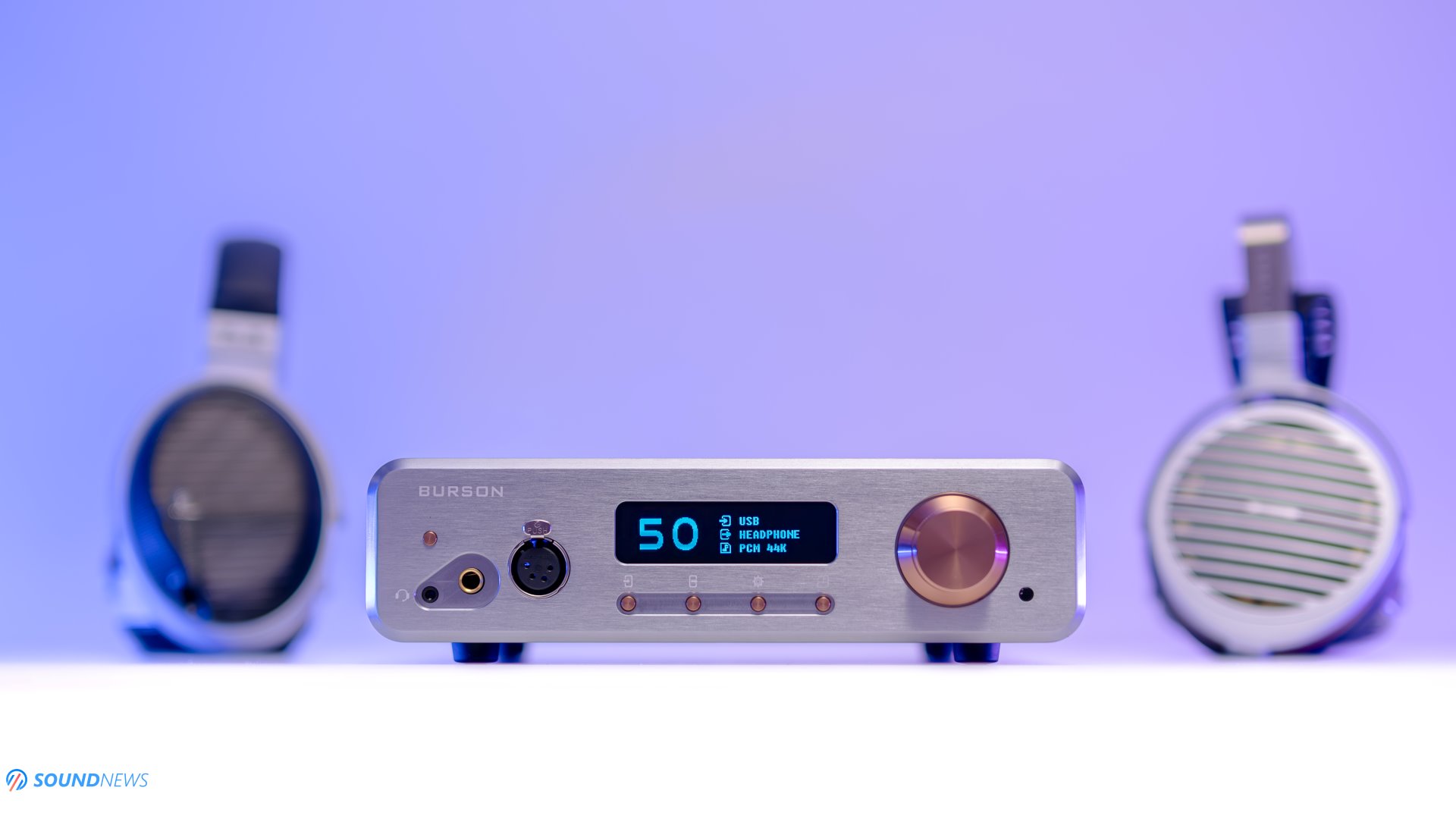
VIII. Midrange
Except for the Soloist Voyager, which deeply impressed me with its life-like tonality, the rest of their doings were great but not exactly sweet-sounding. Their midrange was clean, and the vibration, sustain, and decay of string-based instruments were close to the real thing, but the soul of the music and the warmth I expected to be floored with weren’t there as they were on the Voyager. The Conductor GT4, however, is following the footprints left by the Soloist Voyager, getting meaty and dense sounding in the midrange, with just an added sense of blackness thanks to the Fusion Core providing the cleaning services. The midrange is no longer linear or merely present in the right doses; it’s purer, as the beautiful overtones demand to be explored. The goosebumps are back in the game regardless if you’re into old tunes or new, and even if the sound is now cleaner than ever, I can now easily digest noisy one-century-old recordings without being bothered by the dirty background. The grain effects are still there; the GT4 won’t hide them from you, but since the sharpness is no longer part of its skill set, the music gets effortless and almost liquid, gliding over the notes with ease.
Don’t get me wrong, we are still getting a flat frequency response, but the intricacies of human voices and tonality shifts are now a child’s play, getting meaty and, dare I say, even magical sounding at times.
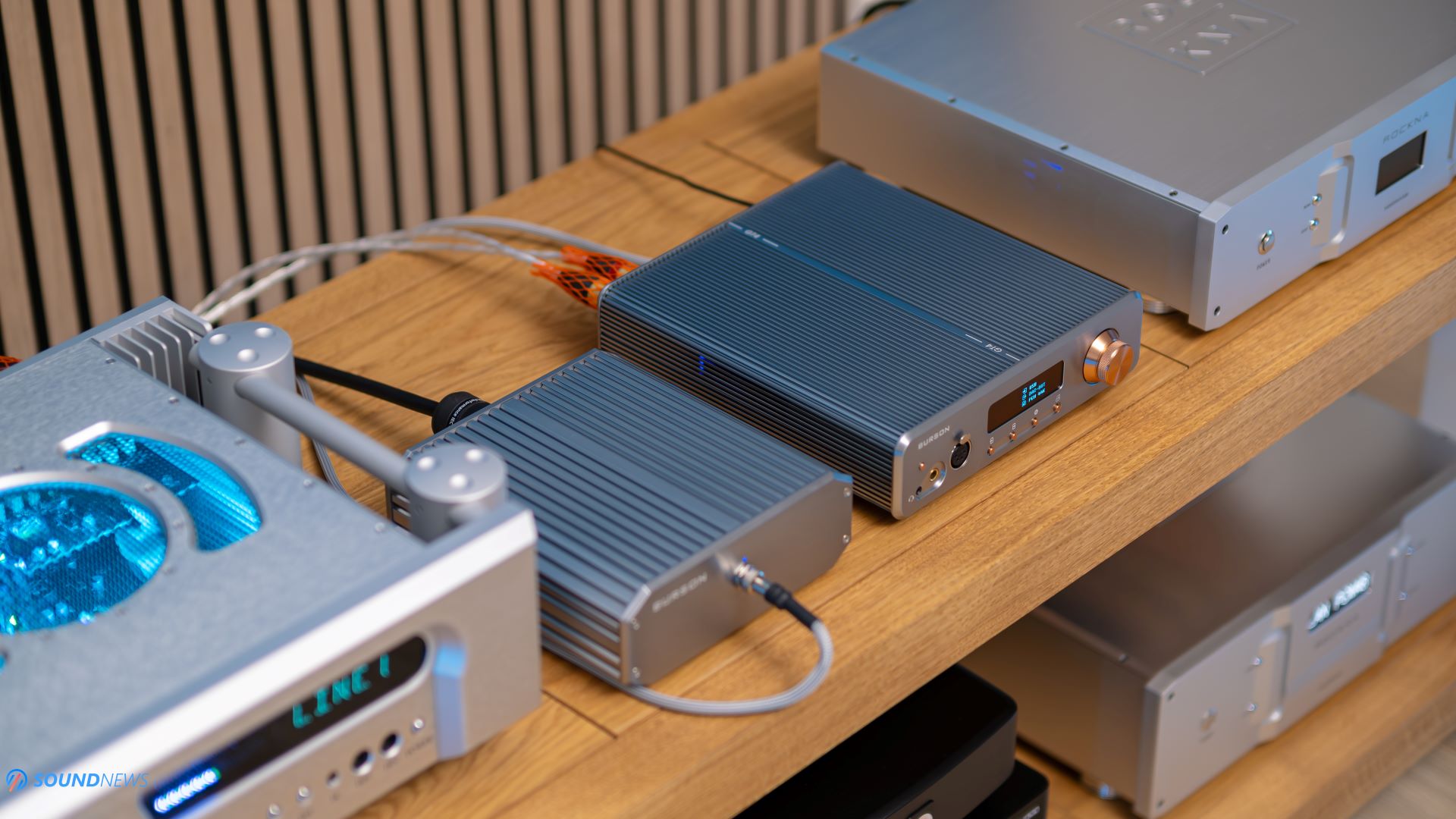
IX. Treble
The same story unfolds when discussing the treble region. Some of their older designs displayed higher treble energy and a stronger sharpness in the upper region, which made system matching an important activity later on. Their Conductor 3X Performance and 3R Reference OG series were a bit sharper-sounding in their stock form compared to traditional fully discrete designs, but you could partially tame them by swapping V6 Vivid with V6 Classic op-amps.
The Conductor GT3 powered by the Super Charger 5A solved my biggest gripe, and I could finally immerse myself without experiencing listening fatigue with ultra-linear headphones or speakers. The GT4 follows the same winning formula, but since there’s a blacker background, stronger dynamics, and a thicker overall tone, the treble feels subdued, as if a magic wand removed the remaining traces of digitus. Considering Burson Audio’s lifelong obsession with getting the tone right and dynamics soaring high, the GT4 feels like the right successor, further improving the fun factor while taming the upper treble.
Burson’s latest unit joins the all-discrete Class-A closed-circle that pursued a detailed, but non-aggressive, treble delivery. As of right now, there’s less grain and more refinement up top; it’s more relaxed-sounding, and I’m no longer skipping my treble-intensive tracks with this one.
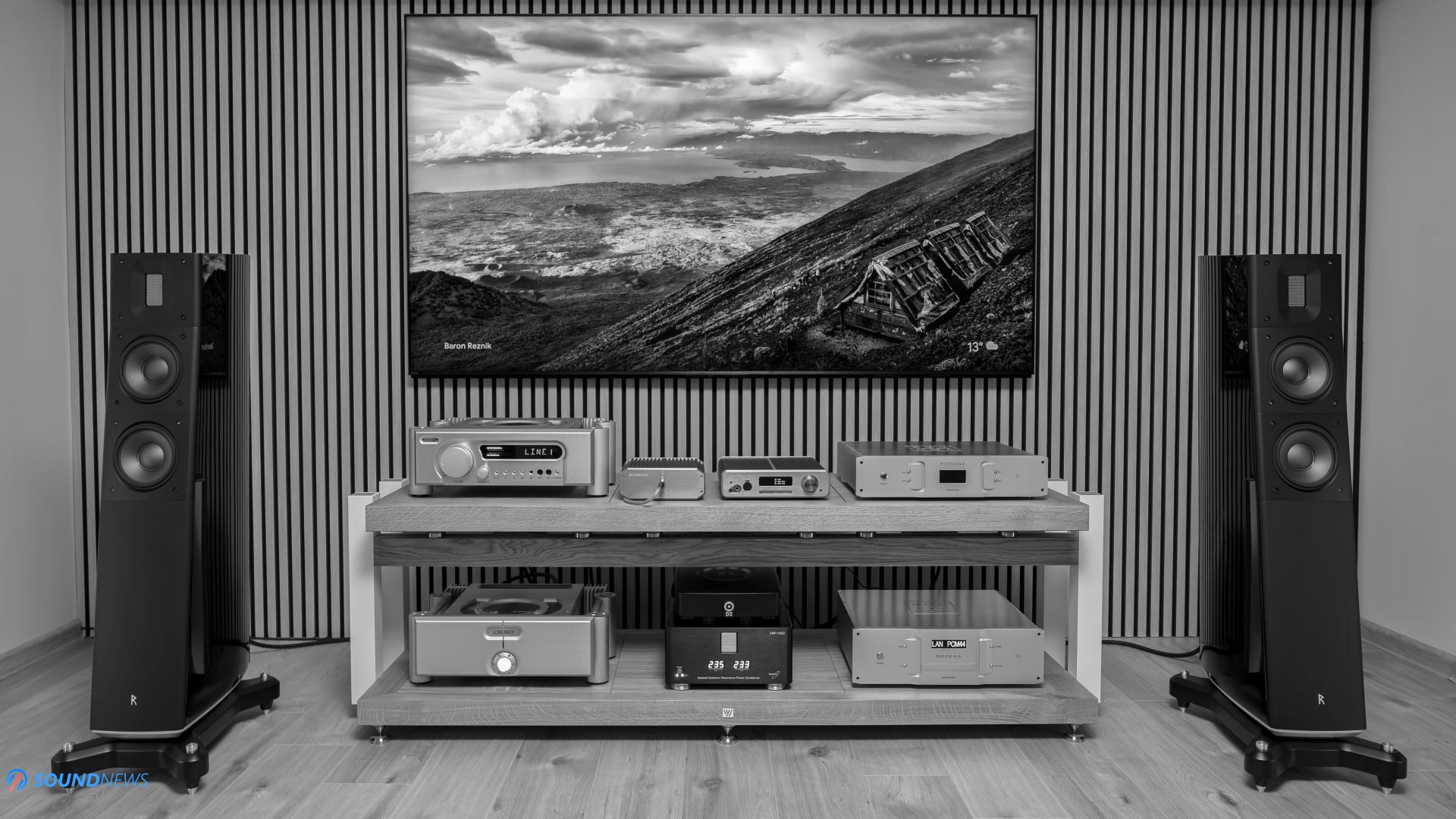
My Conclusions
I was ready to compare it with a couple of units, but I soon realized that I did not have at my disposal a reference-grade DAC/Preamp/Headphone amp combo of the same quality that could match the GT4 for a few rounds. The HiFiMan SERENADE, which I recently reviewed, is an outstanding-sounding unit for the money. The feature set was astounding, and the sound was life-like and sweet, but as much as I have praised its tone and timbre, it simply cannot deliver the same punchy dynamics and fun factor, nor the same driving capabilities, and let’s not forget the resolution game, which feels on a whole new level with the GT4. The Topping DX9 doesn’t provide as much grunt and control with low-sensitivity headphones, it doesn’t kick as hard in the lowest octaves, nor does it offer the same grain-free treble performance. The FiiO’s K19, which I anticipated with so much enthusiasm, proved to be too flat to be considered by melomaniacs. The beautiful overtones and the midrange purity weren’t there on the K19, and I know that subjectivity plays a major role, but I don’t see how a music lover could enjoy an emotionless unit like the K19.
As much as I would like to have a comparison, the GT4 is simply better sounding than its close competitors on several accounts, and to make things even sweeter, these kangaroo high-fivers decided to slash the asking price of the standard Conductor GT4 by $200 compared to the already awesome Conductor GT3. If that’s not taking care of their fan base, then I do not know what is.
Disregarding the 15 pages I just wrote about the Conductor GT4 and summarizing everything in a couple of words: the unit caters not only to hardcore audiophiles who want everything arranged on a plate but also to simple music lovers who want to be carried away and enjoy their tunes. I’m slowly migrating and, right now, I’m more of a melomaniac than an audiophile. Sure, I still demand a high dose of resolution, unlimited driving power, and headroom. I want my headphones tightly controlled and a holographic picture with open-back headphones is always desirable, but above all else, I want to feel the groove and be part of it. I don’t know if you have observed, but except for gear, we started reviewing music. That’s right! You are going to see plenty of album reviews around here, which makes me feel even better.
The Conductor GT4 was designed for music-first audiophiles, making it more universal than its predecessors. Are you into headphones or speakers? Do you like an honest presentation or a colored one? The GT4 nails all of these points, ignoring only the IEM collectors. It wasn’t dead silent with ultra-sensitive IEMs, but considering that we now have a linear volume curve (as opposed to a logarithmic one) and a silent double-fan operation, the improvements on the GT4 are bigger than expected. For all of the reasons combined, it’s my pleasure to award it with our highest honor! The Burson Audio team deserves this praise, and I’m looking forward to their next developments.

You can get it directly from Burson Audio by following this link, or you can contact your local Burson distributor for a listening session. If you are getting a unit, please drop me a line in the comment section below and let me know how it treats you.
PROS:
- The same good-old case that doubles as a giant heat sink, rock-solid build quality
- Thanks to low RPM coolers, the GT4 is now whisper quiet compared to its older sibling
- Advanced feature set, simple looking UI, and all the I/O you can wish for
- The DAC section was improved considerably and it now works with a wider variety of HiFi streamers
- Thanks to lower channel crosstalk, the note separation and soundstage improved
- The headphone amplifier section remained intact, still able to power every load with aplomb and leaving a ton of headroom on tap
- Sounds highly resolving and transparent at all times
- Covers the frequency response in full
- Impressive dynamics, pace, rhythm, and timing
- Excellent preamplifier section
- Distortion less at higher volumes; tightly controls headphone drivers
- Sounds effortless and almost liquid at times
- Delivers an honest presentation without deviations from linearity
- A highly technical, yet engaging-sounding unit
- The nicest all-in-one unit you can buy right now
- The Deluxe and MAX packages are pricier, but well worth the extra
CONS:
- The Fusion Core is pricey, but damn…it sounds so good with it!
- Still noisy with ultra-sensitive IEMs, Fusion Core didn’t help with that
- Still gets warm after about an hour of use; I don’t recommend putting anything on top of it.
ASSOCIATED EQUIPMENT:
- Digital Transport / Roon Server/ Streamer: Rockna Wavedream NET 4 Tb
- Network Switch: Ansuz PowerSwitch D3
- DACs: Rockna Wavedream Signature XLR, LAiV Harmony, Burson Conductor GT4
- Headphone Amplifiers: Burson Conductor GT4, Soloist Voyager, HiFiMan PRELUDE, Ferrum OOR & HYPSOS, Trafomatic Primavera, Enleum AMP-23R
- Preamplifier: Chord Electronics Ultima 2 PRE
- Power Amplifier: Chord Electronics Ultima 5
- Full-sized headphones: HiFiMan Susvara, T+A Solitaire P, Meze Elite, Sennheiser HD800S & many others
- IEMs: FiiO FH19, FA19, HiFiMan Svanar, Westone MACH80 & many others
- Loudspeakers: Raidho TD 2.2
- Interconnects: Crystal Cable Art Series Monet XLR (X2)
- Speaker cables: Crystal Cable Art Series Monet
- Power Cables: Crystal Cable Art Series Monet (X4), Roboli Stars (X2)
- Ethernet Cable: Crystal Cable Art Series Monet
- HDMI Cable (I2S): AudioQuest Dragon
- Balanced Isolation Power Conditioners: KECES IQPR-1500 (stereo setup), PLiXiR Elite BAC 1500 (headphone setup)
